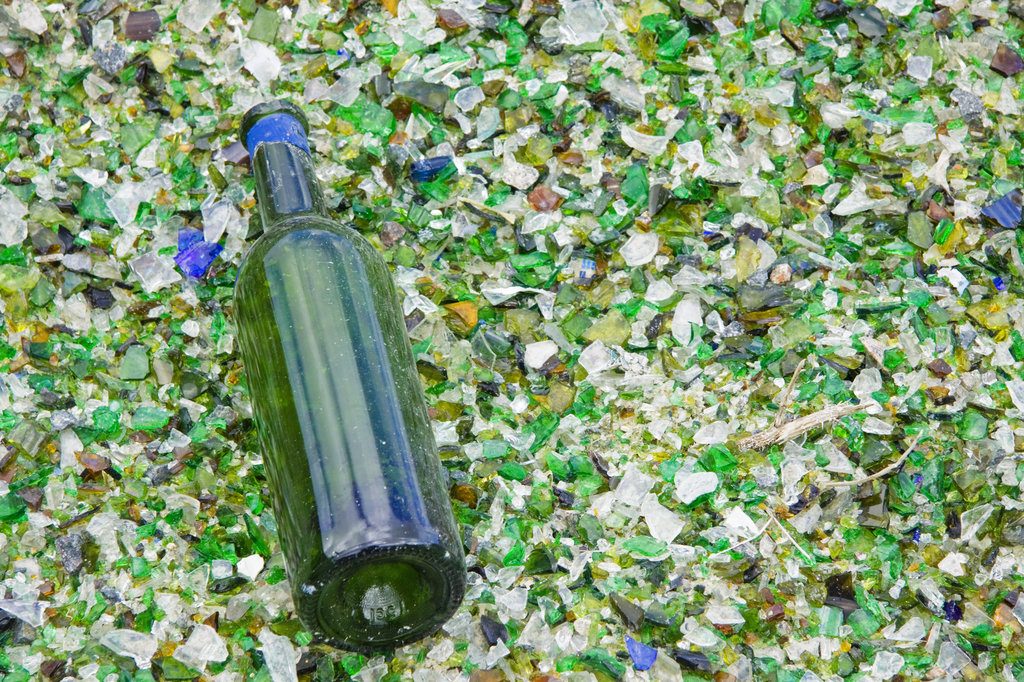
Two container companies saw progress on their recycled content goals. Meanwhile, consumer advocates urged San Francisco to reinstate a retailer collection obligation. | Pjhpix/Shutterstock
Crown Holdings and O-I Glass recently released sustainability reports, and a bottle deposit pilot in California racked up more expenses than deposits, according to a watchdog report.
Crown progresses toward 2030 goals
Crown Holdings shared in its 2022 sustainability report that it reduced its average standard can weight by 6.44%. Its goal is a 10% total reduction by 2030. The company averaged 54.6% recycled materials in its plastic strapping.
Crown also set recycling rate goals for 2030 of 70% in the U.S., and 80% in the European, Middle Eastern and African countries in which the company operates. The company aims to exceed a 90% rate in Mexico and 97% rate in Brazil. Crown plans to set country-specific targets for Cambodia, Thailand and Vietnam by 2025, the report noted.
In the U.S., the plastic tier sheets Crown manufactures in Eden, N.C. included an average of 18.7% recycled content, according to the report. In 2022, the company’s Eden facility recycled 4.7 million pounds of tier sheets, an increase of 71% over 2021. About 1.4 million pounds of that came from other Crown facilities. The sheets also include curbside material.
O-I Glass grows capacity
O-I Glass released its 2023 sustainability report and noted that it averaged 38% recycled content in its bottles, the same as the previous year. Its goal is to hit 50% by 2030.
“We are building strong recycling ecosystems by making targeted investments to find scalable solutions and creating partnerships with our stakeholders,” the report stated.
In 2022, O-I opened 27 collection sites and created 53 closed-loop partnerships with customers to divert 100,000 tons of glass from landfill globally. The report also noted that the company has provided access to glass recycling in 96% of the communities in which its plants operate.
O-I is trying to reduce the amount of plastic film it uses and to develop films with recycled content, the report noted. It is also working to lightweight its glass products by up to 30% by 2025.
The company made $2 million in capital investments to boost both use of cullet and cullet storage capacity. In 2022, it sold about 41 billion containers and had $6.9 million in net sales.
San Francisco pilot costs outweigh returns
On the collection side, a mobile bottle deposit return pilot in San Francisco, Calif. used $3.6 million in state grants and other funding from 2020 to 2022 and returned about $143,000 to consumers, according to a watchdog report.
The San Francisco BottleBank mobile bottle deposit return pilot put mobile return centers in supermarket parking lots, but it cost the pilot 79 cents to return a nickel deposit during the 15 months of the pilot’s operation, Consumer Watchdog noted.
The group is calling for the legislature to refrain from approving more funding for the pilot project and “to restore the obligations of grocery and retailer stores in San Francisco to redeem bottles and cans,” the press release noted.
Previously, the take-back obligation had been removed in favor of the mobile pilot project. In San Francisco, that meant about 450 stores no longer needed to provide redemption services.
“The San Francisco BottleBank program is financially unsustainable,” the press release stated, and the monthly number of containers recycled through the pilot program was in the bottom 1% of recycling centers in the state.
About 2.7 million containers were returned at 18 sites through the pilot over 15 months, the press release noted, so each mobile return center took in 10,000 containers a month. A permanent recycling center in a supermarket parking lot averages between half a million and 2.7 million containers each month, depending on the location and hours of operation, the press release stated.
More stories about brand owners
- Pepsi reduces, extends global recycled resin goal
- Bottlers say PCR usage rose, clearing minimum
- Walmart, Berry keep working toward 2025 plastics goals


